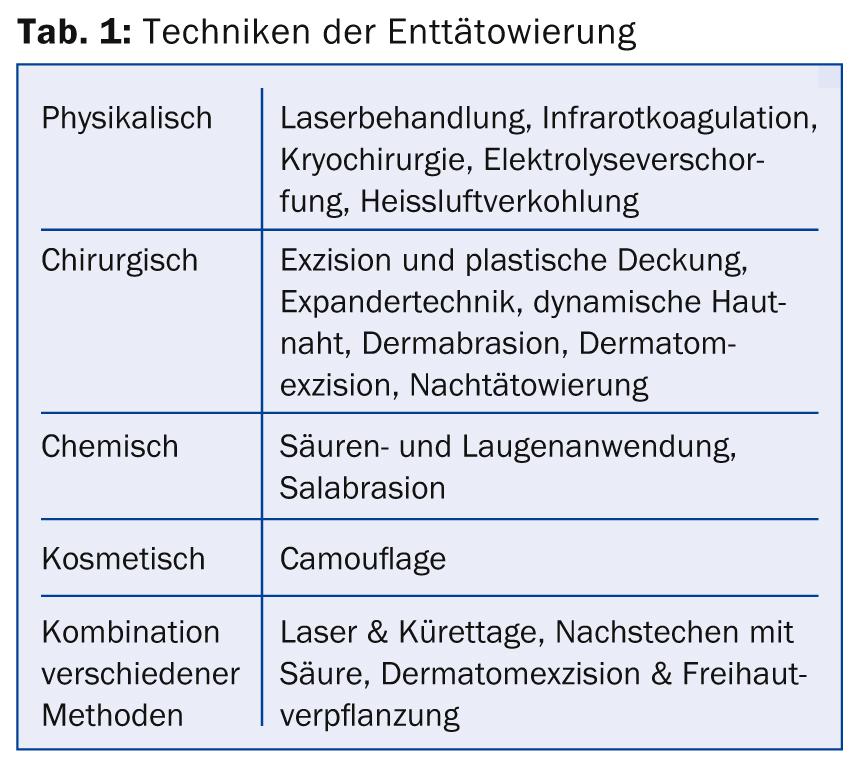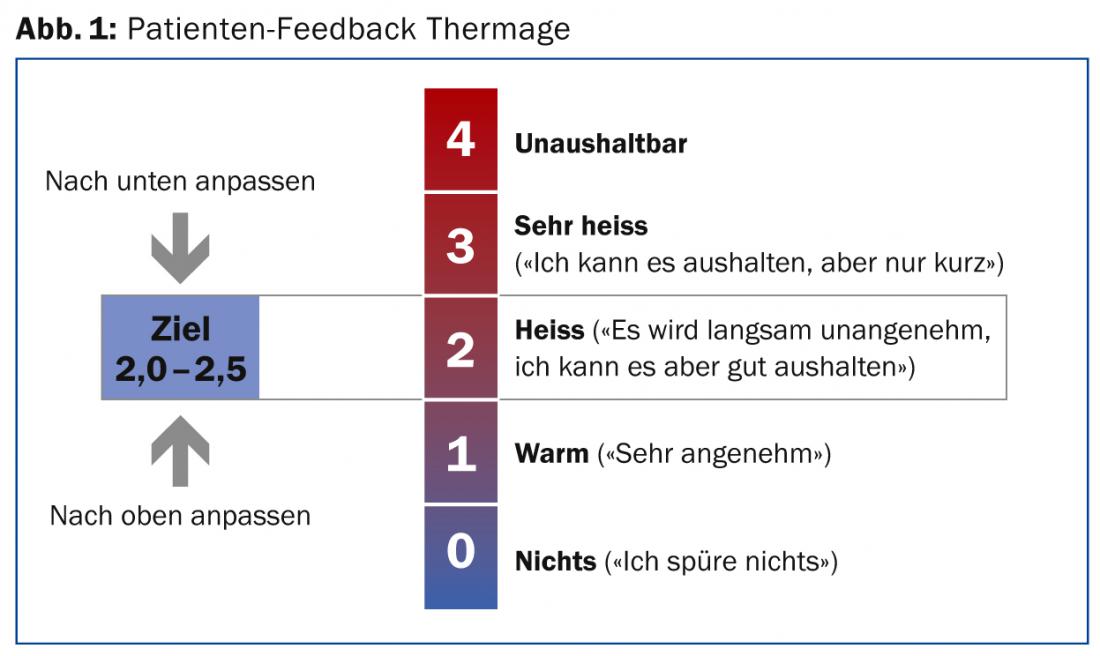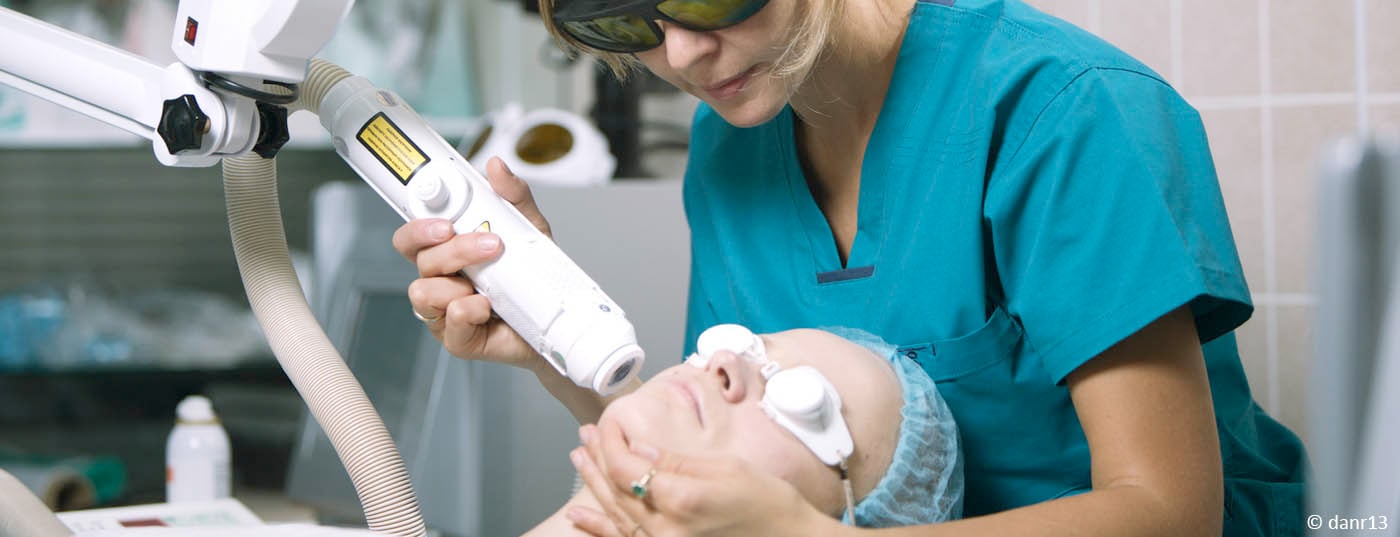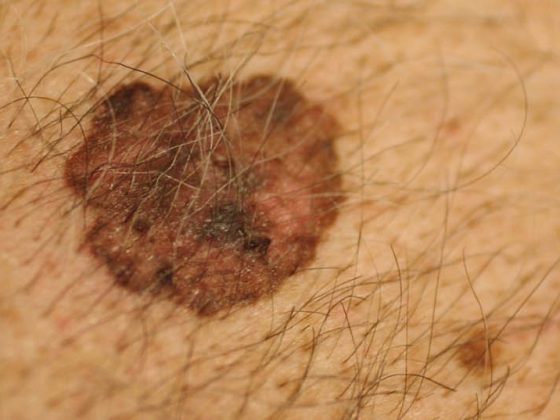The twelfth national laser congress of the Swiss Society for Medical Laser Applications (SGML) in Zurich focused on the possibilities of de-tattooing. If you want to actually remove a permanent tattoo and not just cover it up with camouflage, a scar is inevitable. Various surgical, physical or chemical procedures are used. Skin tightening, another topic of the congress, does not always have to be done surgically. In less advanced cases, thermage, Ultherapy, or fractional laser are sometimes options.
(ag) What to do if you want to remove a tattoo? This was the question discussed by Prof. Claus Udo Fritzemeier, Düsseldorf, MD: “In principle, a permanent tattoo stores the colors in the dermis (corium), i.e. in the stratum papillare and stratum reticulare. Thus, a de-tattooing always leaves scars.”
Besides the jewelry tattoos, there are also the dirt tattoos, for example, from the repeated use of a syringe for drug use, accidents or explosions. Iatrogenic tattoos are used, for example, to mark a tumor prior to radiation, but they can also be cosmetic, such as permanently recording eyebrows, lips, or nipples after surgical reconstruction.
The techniques of de-tattooing available are physical, surgical, chemical, cosmetic or a combination of different methods (Table 1).

For laser treatment, there are the “q-switched” ruby laser, the “q-switched” Nd:YAG, the “q-switched” frequency-doubled Nd:YAG, and the “q-switched” alexandrite. Chemical removal by means of acid and alkali application is usually carried out with the standard solution of nitric acid and acetone in the ratio 2:1. “Regarding the financial cost, laser treatment is by far the most expensive, followed by excision and chemical application. Less expensive are dermabrasion, cryosurgery and night tattooing. And the cheapest, of course, is camouflage, although this technique can be very effective if applied correctly,” says Prof. Fritzemeier.
Skin tightening procedure
Thermage: Monika Hess Schmid, MD, Zurich, spoke on the subject of Thermage. In this process, collagen is contracted (“shrunk”) using high-frequency radio waves. After two to six months, the body’s own collagen forms anew, resulting in a tightening effect. In principle, the thermo effect targets the deeper layers of the skin, the upper layers are cooled at the same time. “There are three depths of heat: superficial (1.1 mm per 0.25 cm2) is used mainly on the eyes for smoothing and tightening, medium (2.4 mm per 3 cm2) applied on the face and submental for smoothing, tightening and contouring and the deep (4.3 mm per 16 or 3 cm2) applied on the body and partly on the face for deep contouring and shaping. In any case, the patient should provide feedback on how the heat feels so that proper energy adjustment can be made. The goal would be to achieve a feeling that is on the borderline of unpleasantness but still easy to bear,” says Dr. Hess Schmid (Fig. 1).

Since the introduction of the current therapy standard in Thermage in 2004, surface irregularities hardly ever occur during treatment. It can be described as gentle, causes little pain, requires no downtime, and usually leaves at most mild edema or erythema. Sensitive localizations on the face sometimes include the supra-orbital nerve, the intra-orbital nerve, the mental nerve, and the great auricular nerve. Dr. Hess Schmid considers the ideal patient to be someone with adequate expectations, mild to moderate skin elasticity or wrinkles, no excessive sun damage, and 35-60 years of age. A contraindication is the use of a pacemaker.
Of course, Thermage cannot replace an invasive surgical method, but as a gentle method and in combination with Botox, filler and laser, it is ideal.
Ultherapy: After Ultherapy was introduced just over four years ago, it quickly established itself within non-invasive aesthetic and medical applications. It uses micro-focused ultrasound energy to precisely access and heat deep tissue layers (about 50 °C causes collagen contraction/”shrinking”). 95% of the total energy is concentrated at about 1 mm3. It penetrates much deeper than laser and radio frequency. The distances between the coagulation points can be set precisely, thus facilitating healing (neo-collagenesis). According to Dr. med. Michael Gütling, Winterthur, a decisive advantage of this therapy is that it does not require downtime, i.e. absence from work and public life. “In addition, focused ultrasound is the only procedure that also initiates a tightening process in the superficial musculoaponeurotic system (SMAS), in the same connective tissue layer where surgical facelift procedures work. This is in contrast to laser/thermage procedures.” The only side effect is pain, which can certainly be a problem. Small hematomas or temporary irritation of the superficial nerves are rare; usually the faint redness or swelling heals after four to six hours and no specific follow-up treatment is needed. In addition, the technique allows, as the only one ever, simultaneous imaging of the treated areas by collimated ultrasound.
Fractional lasers: In so-called “fractional resurfacing”, a maximum of 30% of the skin surface is removed. The “bullet holes” are approximately 120-500 µm in diameter and are surrounded by non-lasered intact skin, resulting in rapid repair. “So the advantages of this therapy are the fast wound healing, the low complication rate, the short downtime, the low pain and the quickly visible results,” summarized Bettina Rümmelein, MD, president of SGML, Kilchberg. However, make-up and over-greasing should be avoided during the first two days. Irritating cosmetics should also be avoided as long as the redness persists. Furthermore, sun exposure should be avoided for at least one month after treatment (only go outside with good sun protection).
Source: 12th National Laser Congress, January 16, 2014, Zurich
DERMATOLOGIE PRAXIS 2014; 24(3): 36-37











